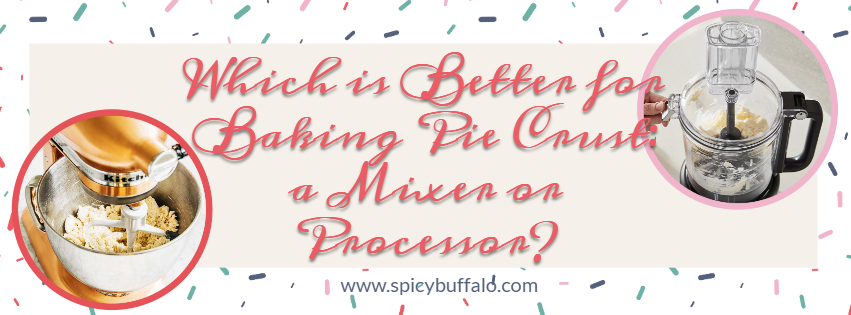
Do you despise the difficulty of constructing a pie crust but enjoy pies? Do you wish there was a more straightforward method to make a beautiful pie crust? There is, and it’s quite simple. You may use either a mixer or a processor to create your pastry dough. So, which one is superior?
Here are the advantages and disadvantages of both the mixer and processor.
Advantages of using a mixer:
-You are in complete control of the mixing process and can stop as soon as the dough is mixed to your desired consistency.
-Mixers generally have more power than processors, so they can easily handle thicker doughs.
-You can use a variety of attachments with mixers to create different textures in your dough.
Disadvantages of using a mixer:
-Mixers can be difficult to clean, especially if you don’t have the right attachments.
-They can also be bulky and take up a lot of counter space.
Advantages of using a processor:
-Processors are very fast and can mix large quantities of dough in a matter of seconds.
-They are also much easier to clean than mixers.
-Processors are small and compact, so they won’t take up a lot of space on your countertop.
Disadvantages of using a processor:
-You have less control over the mixing process, so it’s easy to overmix the dough.
-Processors can also be noisy.
Few things to consider too.
Is it better to make pie crust in a food processor or by hand?
The answer may be determined by your personal taste. Some people enjoy the rustic appearance and feel of a hand-mixed crust, while others prefer the even texture of a processor-made crust. If you’re in a hurry, though, a food processor is unquestionably the way to go.
Another thing to consider is the type of dough you’ll be working with. If you’re making a very tender or flaky crust, you may want to mix it by hand to avoid overworking the dough. However, if you’re making a tougher dough that needs to be rolled out thinly, a food processor will make quick work of it.
Why is a food processor not the best way to mix a pie crust?
A food processor may be prone to overmixing, which might result in a tough and rubbery crust. If you’re using a food processor, combine the dough only until it comes together before stopping. Another reason is that processors can be loud, so if you don’t want to wake up your whole family while mixing by hand, using one may be the better option.
Can you use a mixer instead of a food processor?
Yes, you can use a mixer to mix your pie dough. Some people prefer to use a mixer because it gives them more control over the mixing process. Mixers also generally have more power than processors, so they can easily handle thicker doughs. However, mixers can be difficult to clean, especially if you don’t have the right attachments. They can also be bulky and take up a lot of counter space.
What food processor is best for pie dough?
Any food processor will work for mixing pie dough, but we recommend one with at least a 500-watt motor. This will ensure that the dough is mixed evenly and quickly. Look for a processor with multiple speed settings so you can mix the dough on low speed to avoid overworking it. Additionally, choose a processor with a large capacity so you can mix enough dough for a large pie.
Making the ideal pie crust does not have to be difficult. You can easily make a delicious flaky crust that your family will enjoy, whether you use a mixer or a processor. Just mix the dough gently and stop as soon as it comes together. Overmixing will result in a tough crust, so it’s better to err on the side of caution. With some practice, you’ll be able to produce perfect pies in no time!
Which is better for baking pie crust: a mixer or processor?
The type of pie crust you choose is largely a question of personal taste. Some individuals enjoy the rustic appearance and feel of a hand-mixed crust, while others appreciate the uniform texture of a processor-made crust. If you’re in a hurry, however, food processors are unquestionably your best option. Another factor to consider is the type of dough you’ll be using. If you’re making a soft or flaky crust, you may want to knead it by hand to prevent overtaxing it. A food processor, on the other hand, would have no trouble with a more challenging dough that must be rolled out thinly. Finally, the best way to mix a pie crust is the one that feels most natural to you. You’ll be able to make fantastic pies in no time if you practice!
So, which mixer is best for making pie dough: a stand mixer or a food processor? The answer depends on your preferences. If you want greater control over the mixing process but don’t mind cleaning your mixer, a mixer is an excellent choice. However, if you want to mix dough quickly and simply without any cleanup, a processor is the way to go. You’ll be certain to end up with delicious pies whichever option you select!
Do you have any tips for baking pie crust? Share them in the comments below!
